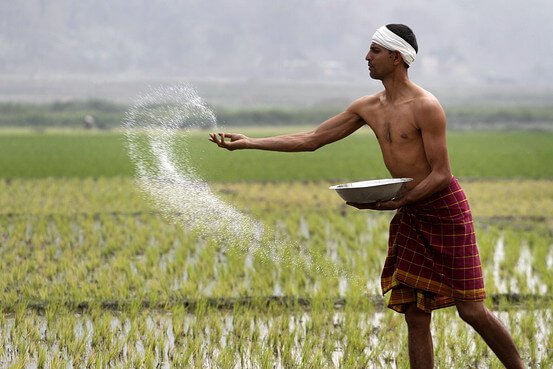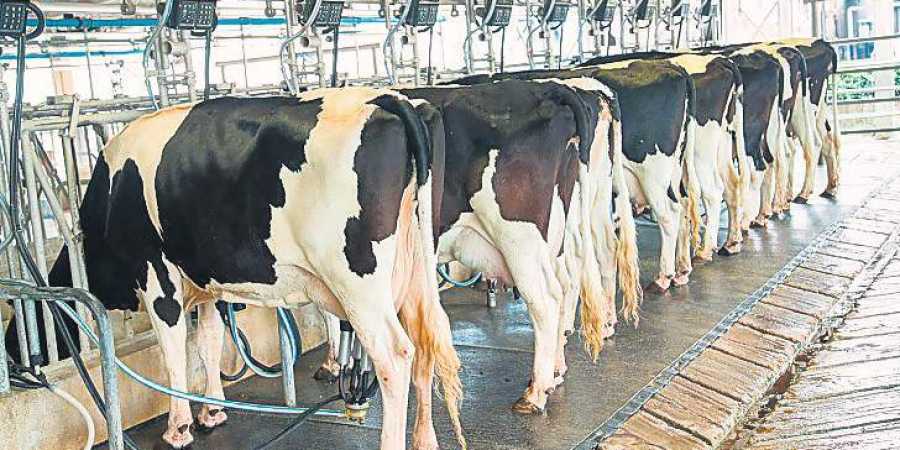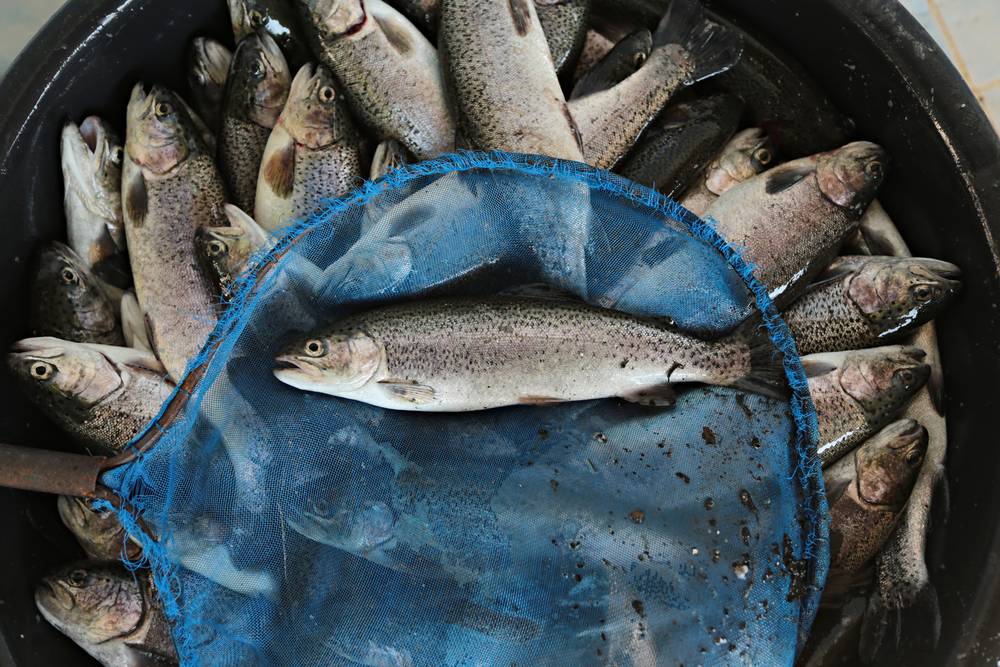The green revolution changes the course of Indian History since Independence. India got independence on 15 August 1947. At the time of independence, India faced partition and saw huge violence. After the departure of the British, India was lacking at many points, and most important of them was Food Crisis. To overcome that shortage, the Indian government initiated a new process for increasing crop production, those processes are termed as Green Revolution.
Green Revolution
In 1967-68 under the guidance of M.S. Swaminathan who is known as the father of the Green Revolution in India. Note Globally, Green Revolution was started with the development of Dwarf wheat, an HYV developed by the agricultural scientist Norman Borough who was awarded the Nobel Peace Prize for contribution to World Food Severity in 1970.

Pre-conditions before the introduction of Green Revolution
The 2nd & 3rd Five Year Plan had over-emphasized the industrialization of the Indian economy. The rural and agricultural sector was stagnant. Meanwhile, India had suffered from successive draught(S) in 1964-65 and 1965-66. India was forced to buy food grains from the international market, especially through PL-480 [Public Law-480]. It was the United States Of America’s Fodd Aid Programme to influence the ‘foreign’ & domestic policies of developing countries.
Objectives of the Green Revolution
- Improving the production and productivity of food.
- Developing food security and self-reliance concerning food production.
- Improving income, employment & wages.
- Improving rural infrastructure & rural development.
Second Generation Green Revolution
The 2nd Green Revolution was planned to sustain agricultural production & productivity through the conservation of natural and environmental resources most importantly through Soil & Water Conservation. The important components of the Second Generation Green revolution are:
- Crop diversification
- Development of Forest cover & Grasslands
- Dairy Farming
- Horticulture
In those regions which have experienced success in the Green Revolution. Expansion of the Green Revolution beyond traditional regions like towards East and drought-prone regions through assured water supply and modernization of agriculture. Conservation of soil and water resources through complimenting chemical-based agriculture with organic agriculture like the use of Compost, Vermi-Compost, Bio-Fertilizers, Bio-Insecticides & Pesticides.
Use of water and soil resources to be according to their potentialities. Thus, crop combinations and agricultural activities are selected and introduced based on the carrying capacity of soil and water resources. For example, the introduction of Horticulture in Northern European Hills as are alternative to Jhum Cultivation and introduction of cultivation of Oilseeds, Pulses, Millets, Horticulture, and Forestry in Semi-dry and dry regions.
The strategy of Implementation: The program was flagged off by ICAR. The program was implemented through the introduction of the following four modern inputs for crop production, improved seeds, assured water supply, chemical fertilizers, insecticides & pesticides, and machines. These four inputs are introduced together. This is why the Green Revolution is also called Package Technology.
Achievements of the Green Revolution: India is now the 2nd largest producer of rice & wheat in the world. Now India mountains food security with large production and large buffer stock. There has been an improvement in the income of farmers, employment levels, and wages. Green Revolution has supported rural infrastructure, rural development, urbanization, and industrialization. The entire industrialization and urbanization of the NCR region have been supported by the rural & agriculture prosperity of Punjab, Haryana, and Western, U.P.
Problem Areas of Green Revolution:
The green revolution is criticized based on economic limitations and environmental costs.
Economic limitations: success is limited in terms of crops, in terms of geographical location and sections of farmers.
- Limitations In Terms Of Crops: Green Revolution is advantageous to wheat, rice & cotton. Production of crops like jowar, bajra, ragi, and pulses is stagnated. These are in fact rainfed crops. Whenever irrigation is not facilitated, they suffer.
- Geographical Limitation: The success of the Green Revolution is limited to PUNJAB, HARYANA, WEST UP, and Coastal regions which have assured water supply through irrigation. It is a contributing factor to regional imbalances.
- Limitations Due To Section of Farmers: Green revolution has been mainly beneficial to the rich famous at the cost of subsidies provided by the government. It is a source of inter-personal inequality in the villages.
- Environmental Cost: Green Revolution has been responsible for deforestation, overuse of chemical fertilizers, insecticides & pesticides, water pollution, water lugging in lowlands due to leakage from canals, soil pollution, overuse of soil & water resources, and the problem of soil alkalinity & salinity (especially in Punjab, Haryana, North Rajasthan & West U.P)
White Revolution
This was introduced in 1970 by Verghese Kurien. He is known as the Father of the White Revolution. The objective of this revolution was improving milk production & productivity, improving per capita per day availability of milk, creation of additional employment and income, and improving rural infrastructure and development.
Strategy & Implementation
NDDB (National Dairy Development Board): The Programme was implemented through Operation Flood. Cooperatives like AMUL (Anand Milk Union Limited) were established. The achievements of the White Revolution were; India is the largest producer of milk and per capita per day availability of milk is now more than 280 grams/person/day. Doing development is a contributing factor in the rural development of states like Gujarat, Punjab, and Haryana. India is now an exporter of solid milk and milk products.
Problems Areas of White Revolution
The supply of pastures/grosses/fodder is directly connected to milk production. The supply of pastures is dependent on the performance of monsoon. During flood and drought milk supply is reduced, the price of milk is increased. Per capita per day production of milk in India is poor as breeds of milch animals are inferior in India.
The climate of India is hot and humid. Epidemics are common and health infrastructure is poor. Rural infrastructure is poor. Collection and transportation of milk require all-weather roads in rural areas. Collection and transportation is difficult especially during disturbed weather like heavy rainfall, cyclones, floods, etc
Blue Revolution
Introduction: It was started in 1970. Blue Revolution, the Neel Kranti Mission has the vision to achieve economic prosperity of the country and the fishers and fish farmers as well as contribute towards food and nutritional security through full potential utilization of water resources for fisheries development in a sustainable manner, keeping in view the bio-security and environmental concerns.
Objectives of the Blue Revolution
- To improve fish production and productivity
- Realization of production of fish through inland fishing
- Improving per capita per day availability of protein
- Additional employment and income creation.
Strategy & Implementation
National Fish Farm Development Agency was established. The program was implanted through extending the following biotechnology and financial inputs to fish farmers and fishermen:
- Fast Growing varieties of fish
- Improved nets
- Biofeed
- Mechanized boats and trawlers
- Financial support for cooling, refrigeration & packaging facilities to improve the processing and marketing of fish and fish products.
Achievements
- India is now the 3rd largest producer of fish after China and Japan.
- In terms of inland fishing, India is the 2nd largest producer after China.
- Now the contribution of inland fishing is more than marine fishing.
- India is now an exporter of fish and fish products.
- Marine export is the largest sector of export in the agriculture and allied sector.
Problem Areas
Natural hazards like drought, flood, cyclones, tsunami adversely affect fish production. Growing water pollution is a major concern. It is adversely affecting fish and fish production in ponds, lakes, rivers, and coastal regions. Rural infrastructure is a poor lack of electricity and power is a major hindrance in refrigeration and packaging of fish and fish products. It adversely affects income and employment in rural areas. The fish market is highly localized. In the case of surplus production, wastages are high.



